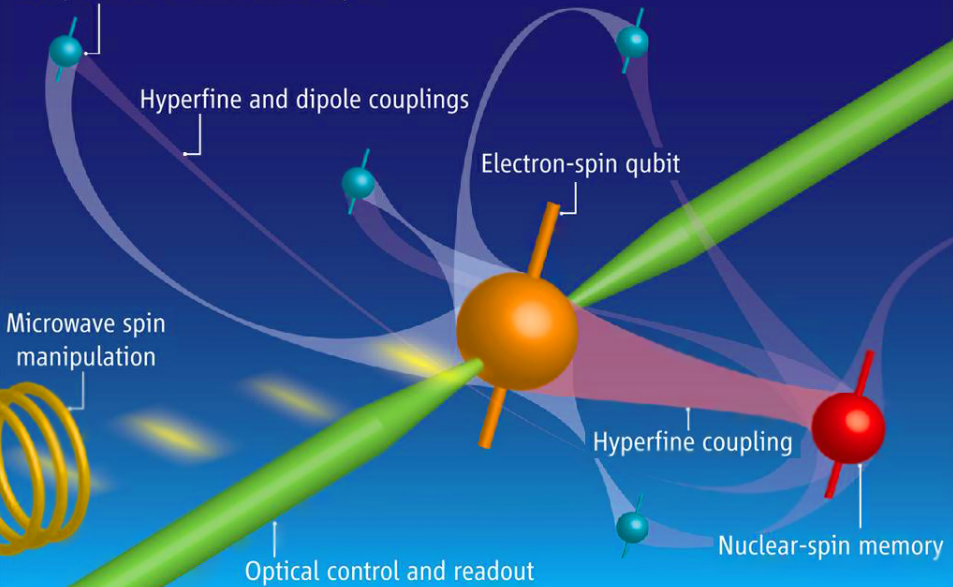Engineers at EPFL have devised an apparatus proficient in transmuting heat into electrical voltage with remarkable efficiency at temperatures even more frigid than those encountered in the cosmos. This innovation holds the potential to profoundly advance quantum computing technologies by surmounting a pivotal hurdle.
Quantum computations necessitate the cooling of quantum bits (qubits) to temperatures in the millikelvin range (proximate to -273 degrees Celsius) to attenuate atomic motion and minimize interference. However, the electronics employed to regulate these quantum circuits generate heat, which is arduous to dissipate at such low temperatures. Consequently, extant technologies predominantly isolate the quantum circuits from their electronic constituents, resulting in noise and inefficiencies that obstruct the development of expansive quantum systems beyond laboratory confines.
Researchers at EPFL’s Laboratory of Nanoscale Electronics and Structures (LANES), under the guidance of Andras Kis in the School of Engineering, have now contrived a device that not only functions at extremely low temperatures but also achieves efficiency on par with contemporary technologies at ambient temperatures.
“We are the pioneers in creating a device that mirrors the conversion efficiency of current technologies but operates at the low magnetic fields and ultra-low temperatures requisite for quantum systems. This work is genuinely a leap forward,” states LANES PhD candidate Gabriele Pasquale.
The pioneering device amalgamates the superb electrical conductivity of graphene with the semiconductor properties of indium selenide. Merely a few atoms thick, it functions as a two-dimensional entity, and this novel amalgamation of materials and structure engenders its unparalleled performance. The accomplishment has been documented in Nature Nanotechnology.
Exploiting the Nernst Effect
The device harnesses the Nernst effect: an intricate thermoelectric phenomenon that engenders an electrical voltage when a magnetic field is applied perpendicularly to an object with a varying temperature. The two-dimensional nature of the laboratory’s device permits the efficiency of this mechanism to be modulated electrically.
The 2D structure was fabricated at the EPFL Center for MicroNanoTechnology and the LANES laboratory. Experiments entailed utilizing a laser as a heat source and a specialized dilution refrigerator to achieve 100 millikelvin – a temperature even colder than outer space. Converting heat to voltage at such low temperatures is typically exceedingly challenging, but the novel device and its exploitation of the Nernst effect make this feasible, addressing a crucial void in quantum technology.
“If you envision a laptop in a chilly office, the laptop will still generate heat as it operates, causing the temperature of the room to rise as well. In quantum computing systems, there is currently no mechanism to prevent this heat from perturbing the qubits. Our device could provide this essential cooling,” Pasquale elucidates.
A physicist by training, Pasquale underscores that this research is significant as it illuminates thermopower conversion at low temperatures – a hitherto underexplored phenomenon. Given the high conversion efficiency and the employment of potentially manufacturable electronic components, the LANES team also believes their device could already be integrated into existing low-temperature quantum circuits.
“These findings signify a monumental advancement in nanotechnology and harbor promise for developing advanced cooling technologies imperative for quantum computing at millikelvin temperatures,” Pasquale asserts. “We believe this accomplishment could revolutionize cooling systems for future technologies.”
This article was originally published on scitechdaily. Read the original article.
FAQs
How does the new device improve quantum computing?
The device improves quantum computing by efficiently converting heat to electrical voltage at extremely low temperatures, thereby addressing the critical issue of heat dissipation in quantum systems.
What makes graphene and indium selenide suitable for this device?
Graphene’s exceptional electrical conductivity and indium selenide’s semiconductor properties combine to create a highly efficient two-dimensional structure that performs well at ultra-low temperatures.
What is the Nernst effect and how is it utilized?
The Nernst effect generates an electrical voltage when a magnetic field is applied perpendicular to a material with a temperature gradient. The device harnesses this effect to convert heat to electrical voltage efficiently at low temperatures.
How does this breakthrough impact current quantum technologies?
This breakthrough provides a new method for managing heat in quantum systems, potentially leading to more scalable and efficient quantum computing technologies.
What are the next steps in this research?
Future research will focus on optimizing the device’s performance, exploring further integrations with quantum computing systems, and addressing remaining challenges in the technology.
